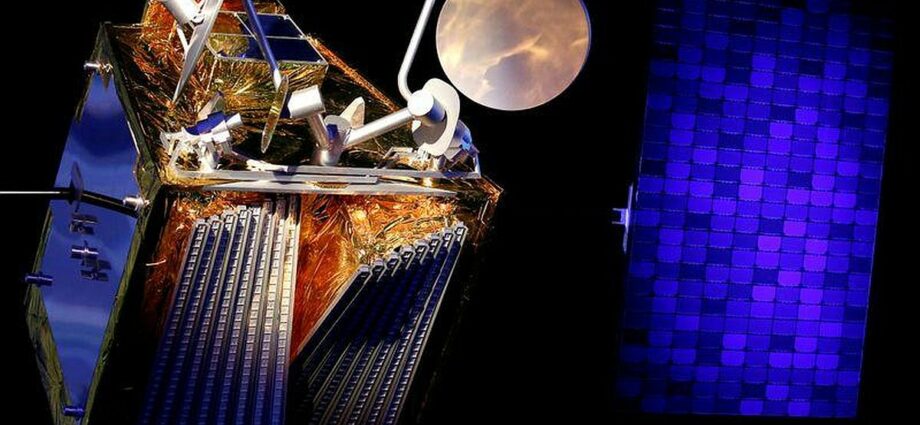On Sunday, at 12.07 am in Sriharikota, off the coast of the Bay of Bengal, it was almost like an early Diwali, with the sky lit up by the launch of 36 OneWeb satellites.
The Indian Space Research Organisation (Isro) did the launch on a 43.5-metre-tall Geosynchronous Satellite Launch Vehicle Mark III (GSLV Mk III) rocket.
After the countdown, which started 24 hours in advance, once the mega screen marked the launch, a select group of invitees at the gallery cheered by applauding the feat.
The 36 communication satellites were placed on the low-earth orbit as part of the OneWeb India-1 mission, or the LVM3 (Launch Vehicle Mk III) M2 mission.
This marked the maiden commercial launch of LVM3, India’s heaviest launch vehicle, also known as GSLV Mk III.
It was also NewSpace India’s (NSIL’s) first launch with the vehicle (NSIL is the commercial arm of Isro).
It also became the first Indian rocket with a payload of 5,796 kilograms.
OneWeb, formally known as Network Access Associates, is the UK-based customer of NSIL, Isro’s commercial arm, and a global communication network powered from space, enabling internet connectivity for governments and businesses.
Bharti Enterprises is one of the major investors in OneWeb.
“Happy Diwali! We started celebrations already at the Satish Dhawan Space Centre,” said Sreedhara Panicker Somanath, chairman, Isro.
Neither mobile phones nor cameras were allowed at the mission centre, giving no opportunity for selfies.
Each stage of the launch — from ignition to separation — was greeted with applause by a packed audience.
This was OneWeb’s 14th launch and its first association with NSIL.
The GSLV Mk III is reportedly a three-stage rocket with the first stage fired by solid fuel, the second by liquid fuel, and the third in cryogenic mode.
OneWeb satellites are arranged in 12 orbital planes with 49 satellites in each plane on a 1,200-kilometre circular orbit.
The company is implementing a constellation of low-earth orbit satellites and will have 648 satellites.
Shravin Mittal, managing director, Bharti Global, said these satellites were targeted for “connecting the unconnected”, providing satellite-based internet in remote and rural parts.
While Somanath was addressing the media, almost an hour after the launch, news came that all the 36 satellites were successfully launched.
“This is historic. In the second operational mission only, LVM3 is going commercial,” he said.
Somanath also announced the launch of Chandrayaan-3 mission in June next year.
“LVM’s next mission will be for OneWeb only, the next Chandrayaan-3, and after that the Gaganyaan unmanned mission,” said Somanath.
The Chandrayaan-3 mission is India’s third space venture targeting the moon.
Although it was supposed to launch in late 2020 or early 2021, it was reportedly delayed due to the pandemic.
“Chandrayaan-3 is almost ready. Some more tests are pending, which we will be doing a little later.
“We may be looking at the June 2023 slot for its launch,” he said.
Source: Read Full Article
-
ESPN Bet: Network Makes Wager On Sports Betting With Standalone Sportsbook App
-
UK’s first ‘pre-loved’ clothing charity supermarket opens
-
Eight months after rolling back farm laws, Centre sets up MSP panel
-
12% of Apple’s iPhones sold worldwide could be India-made by FY26
-
Post Office Sells New Board Game


